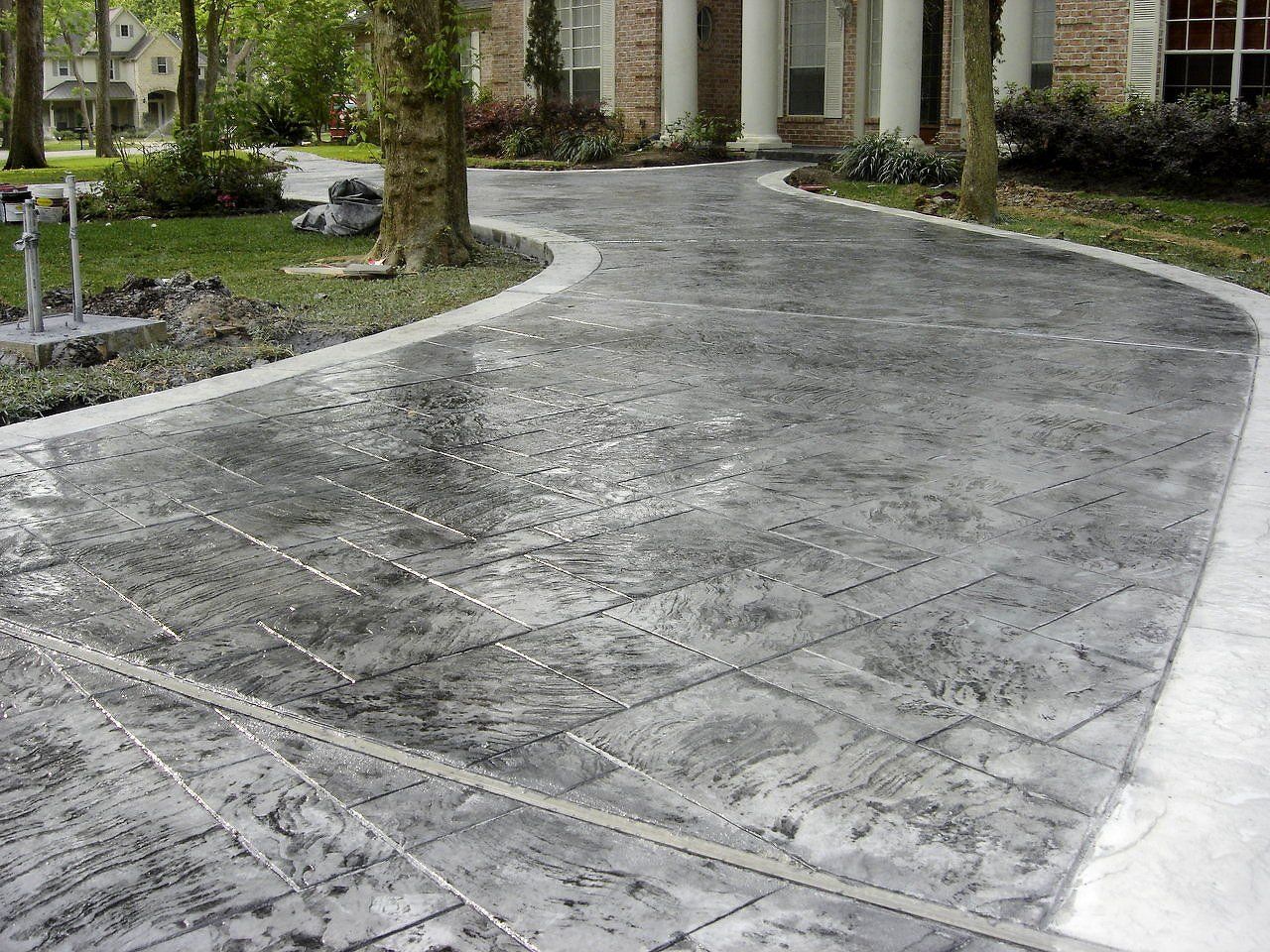Tips for Putting in a Concrete Driveway - Knoxville Concrete Contractors Co
How to Install an Concrete Driveway Knoxville Concrete Contractors Co
Concrete driveways are the most popular option for homeowners. They are available in any dimensions you'd like. Concrete driveways are long-lasting and straightforward to take care of. They also have greater capacity to bear load and have better heat reactions. It also increases curb appeal, and is a green option. Its robustness makes it a great choice for homeowners. Concrete driveways are strong enough to withstand any type of vehicle because of their durability and capacity for carrying loads.
Gravel is an alternative for driveways. It is a naturally-sourced product that is a great substitute for concrete. This material is versatile and easy to work with and is an ideal choice for homeowners. Crushed rock Rebar mesh wire, crushed rock, and fabric underlayment are great options for driveways. These materials are compacted by vibratory plate compactors or rammers. When constructing a driveway made of gravel , you must follow their instructions regarding the correct dimensions and size.
While installing concrete driveways the base must be solid and homogeneous. A base that is composed of 6-" 12" of crushed stones or gravel is best for drainage as well as a better capacity to carry loads. Subgrades and bases should are free of organic material. Concrete driveways may be damaged because of subgrade pockets that are soft. The subgrade and base must be able to slope away from buildings and other objects in order to ensure adequate drainage. A proper drainage system requires an average tilt of 1/4" per foot.
The driveways made of concrete last for a long time and require minimal maintenance The edges, however, are susceptible to the stains of oil and other substances. Edges are floated in order to provide maximum protection, but they are extremely susceptible to leaks of water. Make sure you follow the directions of the manufacturer if you decide to create a driveway of concrete. It's quick and inexpensive. If you're looking to install the new driveway, make certain to hire an experienced contractor. You'll be pleased with the outcome and the longevity of your new concrete driveway.
In order to prevent water from flowing into the future it's vital that your driveway's edges float. To ensure your safety, the edges of the driveway must have a minimum of one-quarter or an inch in thickness. Many homeowners choose an exposed aggregate driveway. It is beautiful and long-lasting. It doesn't require any maintenance. Asphalt-paved driveways last for more than 30 years. This is why it is prudent to take into consideration this option.
A concrete driveway that is flooded is vital for safety. While it does not require any particular care there is a possibility of developing staining over time. Concrete driveways don't come with an outlet to drain rainwater. A sloppy spot on your driveway could also create a sloppy appearance. It's not just a matter with regards to safety it also has a negative impact on the overall appearance of your driveway. If the amount of water that accumulates is excessively high the risk of flooding could be a factor.
Floating on the concrete edges is an excellent idea. It stops water from leaking as well as makes the driveway more durable and smooth. Concrete driveways without decorative finishings must be sealed to avoid cracks. A poorly-installed concrete driveway can lead to expensive repairs. It is in any circumstance it is essential that you follow the directions of the manufacturer and anticipate any the possibility of damage.
The ability to float an edge on driveways constructed of concrete is vital in ensuring the durability. The edges need to be smooth, and a durable sealant is necessary to stop bleeding water and to stop it from damaging your concrete's surface. The edges of a floated over a concrete driveway need to be sealed in order to stop it from becoming discolored over time. To prevent color change on the concrete drive at the surface, the top layer has to be sealed, even if the concrete isn't waterproof. To prevent the elastomer from coming into contact with concrete surfaces, it is suggested to apply an asphalt-based paint or a sealing agent based on polymers.
Concrete can be used for driveways without the requirement for decorative finishes. Although it's not mandatory to put a decorative finish on concrete driveways but it can enhance the look of your home. It's sturdy and can stand up to all weather conditions. Whatever you prefer, whether a stylish or plain concrete surface, it's an ideal choice for driveways constructed of concrete. The cost is very affordable in the event that you are looking for an upgrade.
Before you construct the concrete driveway, it is crucial to know the kind of material that it's made of. The strength of your driveway will be determined by various variables such as how much weight you intend to place on it, soil quality as well as your budget. If you're thinking of installing a new driveway then here are some tips to think about. Here are some great tips to help you select the most suitable material. Once you've finished this step, you can apply a concrete sealer.
If you plan to put high-loads on your concrete driveway It's a good idea to place the edges of the driveway on the water. This helps to stop water from flowing in the roadway. It also makes it easier for cracks to be discovered and safeguards your driveway from damage from potholes. You are able to opt out of bar if you are dealing with slabs less than 5 inches thick. Rebar helps prevent bleed-water through stopping the bleeding water from evaporate.
If you're planning to construct on a driveway made of concrete you must ensure that the concrete isn't affected in any way. Concrete driveways that are durable are not prone to cracking. Concrete slabs are constructed from cement, which is a natural substance that is able to withstand pressures up to a certain point. It is also able to support massive weights. It should be sealed to stop water from vaporizing. After it has been sealed that the concrete will be able to stand against the heavy load of your vehicle.
The construction of an asphalt driveway should be managed by professionals with experience. It is crucial to take into consideration the quality of previous work and also the feedback of clients who have worked previously with us. When the concrete driveway is been constructed it will appear clean and level. A driveway made of concrete built properly will boost the worth of your home and boost your confidence while driving. It also makes it easier to park your vehicle in your garage.
Concrete driveways have joints that permit periodic expansion or contraction. Rebar is an important structural element of the concrete driveway. Rebar needs to be laid out on an even surface that is smooth. This will prevent the driveway from sinking into the shape of pit. Also, it will be easier to keep your concrete driveway in good condition when you seal it with an adhesive. You should also think about what materials you'll need for the finalization of your driveway.
The thickness of the concrete driveway depends on its purpose, size and the budget you have set. Most driveways for residential and commercial use can be between" and 6 inches thick and highways range from 12" to 12 inches thick. If you choose to build a higher or a thinner foundation for your concrete driveway be aware that it's more expensive than what it is supposed to be. You should also consider how the driveway will look.
If you're planning to install the driveway with concrete, it's important to when preparing your driveway to prevent a potential water issue. Clear any vegetation and make sure that the soil is stable. Then, set up wooden forms along the edges of the driveway to create a level foundation. Fill the gravel base with class-5 gravel. The gravel should be four inches thick and compacted and graded. In the next step, you'll need reinforcement materials such as rebar made with metal or a steel wire grid.

